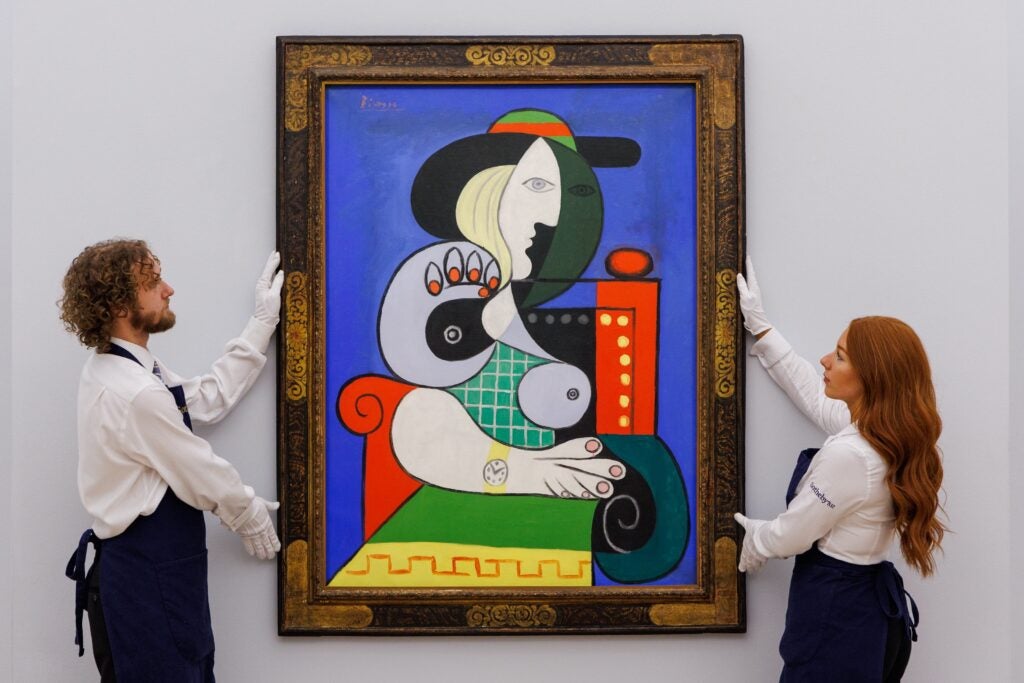
Investing in art has long been an intriguing but complex endeavour, offering a unique set of opportunities and challenges for those willing to navigate its waters. While the financial value of art has been established by the consistent performance of top-ranked artists, there are several factors to consider when delving into this world. And in the current climate of economic uncertainty, high-net-worth individuals (HNWs) are increasingly turning to alternative investments like art and collectibles.
[See also: Outstanding art advisers for high-net-worth individuals]
Painting a picture
One of the main challenges of investing in art is its lack of liquidity. Unlike stocks or bonds, art is often illiquid, meaning it cannot be easily converted to cash. Selling art can take time, and finding the right buyer at the right price can be difficult, especially during economic downturns and if a sale needs to be done fast.
Another challenge lies in the subjectivity of art’s value. Valuing art is a subjective process influenced by factors such as the artist’s reputation, art market trends, condition, provenance, and subjective aesthetic appeal. Determining an artwork’s true value can be a complex and challenging task. This is why often an estate is being sold at auction and then financials divided among the heirs.
[See also: The generational divide shaping the global art market]
Art markets are also rather volatile, susceptible to changes in trends, tastes, and economic conditions. The value of artworks may fluctuate significantly over time, a bit less for top established artists, making it crucial for investors to stay informed and adapt to market dynamics.
Authenticity and provenance are further challenges in the art investment world. Proving the authenticity and provenance of artworks can be difficult, and disputes over these aspects can significantly affect an artwork’s value and marketability. Conducting thorough due diligence to avoid counterfeits is a necessary but time-consuming and costly process.
Investing in art also comes with relatively high costs and fees. Buying, storing, insuring, and selling art can be expensive, especially for valuable pieces. Additionally, transaction fees and commissions in the art market can reduce investment returns.
Finally, local regulations and the absence of dividends or annual returns (like those seen with gold investments), are additional factors to consider.
Taking the plunge

Despite these challenges, there are numerous opportunities for those willing to invest in art. Successful art investments can yield substantial returns, with some artworks appreciating significantly over time and outperforming traditional investment assets like stocks or bonds.
Art can also serve as a diversification tool in a portfolio, offering a hedge against market volatility and inflation. Its value often does not always correlate with traditional financial markets, potentially providing stability during market downturns.
Beyond its financial aspects, art is a tangible and enjoyable asset. Unlike stocks or bonds, art can be displayed and appreciated aesthetically, offering intrinsic value beyond its monetary worth or a nice combination. The global nature of the art market also provides investors with access to a wide range of artworks and artists from different cultures and regions. Investing in art can support emerging artists and potentially discovering undervalued talents as a cultural contribution.
The art market is also evolving with increasing interest and involvement from the financial industry. Art services, such as art advisory, art lending, and art investment services, are being offered by financial institutions in a growing manner. The art market itself is becoming more transparent, thanks to research in finance and economics and improved data dissemination as well as database-services. Thus, art as an asset becomes the new normal understood by many more players.
Thorough research, understanding market dynamics, and seeking expert advice are essential when navigating the world of art investment. Investors must carefully evaluate their risk tolerance, investment goals, and the potential challenges associated with investing in art before making any decisions.
In conclusion, art investment offers a unique blend of opportunities and challenges. While it can be a fascinating and potentially profitable endeavour, it requires a deep understanding of the art market, diligent research, and careful consideration of individual circumstances. By exploring the world of art investment, investors can unlock new avenues for growth, diversification, and cultural enrichment. Enjoy it!
Thomas Reinshagen is an independent art adviser.






